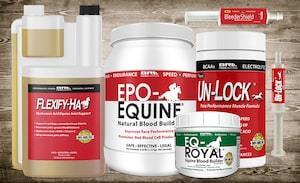
It’s hard to find an equine facility without a bit of mud, and by spring most paddocks have plenty of it. Mud is not just an annoyance; it also presents a risk to your horse’s health. When it comes to equine health, mud prevention and control around your facility needs to be a priority.
Why Mud Matters to Equine Health
Not only does mud make it difficult for horses to move properly, but it can cause slips and falls. Mud also affects a horse’s balance, and standing in mud over the long-term can cause joint pain. If your horse stands in deep mud or falls as a result of the mud, he can sustain strained or even torn tendons or ligaments.
Mud also negatively impacts the health of your horse’s hooves, causing issues like thrush and tender feet. Your horse may lose shoes in deep, sticky mud, and the soft ground can even cause abnormal hoof growth. If mud softens up your horse’s feet too much, he may be prone to hoof bruising and abscesses.
Finally, mud can cause skin conditions, like scratches, which will make your horse uncomfortable and often require intense treatment to resolve.
With harsh winters or heavy spring rains, you probably won’t be able to prevent mud from forming in your pastures entirely; however, there are a few things you can implement to minimize the threat it presents to horses.
Remove Manure Promptly
Manure cleanup is particularly important in preventing mud in smaller pastures. Left to sit, manure will only contribute to your mud problem. Add paddock cleanup to your daily chore list to keep it manageable.
Additionally, try to keep hay up off of the ground so that it doesn’t get churned into the footing. As hay molds and rots, it can make mud worse. Feed hay in hay bags or on rubber mats to reduce the amount that ends up in the ground.
Install Drainage
If particular areas in your turnouts are plagued by mud, then installing drainage may be an option. French drains can be particularly helpful. These drains are trenches that contain a perforated pipe. The trench is filled with gravel, which allows water to flow down into the pipe, which directs the water away from your turnout. French drains are labor-intensive to install, but they can make a significant difference in keeping water from flowing down into a lower area of your turnout.
There are also plenty of options to help you improve the drainage in your paddock. You can purchase a number of landscaping grids, like Lighthoof grids, that will help to promote drainage right within your paddock. These grids can be expensive, so most horse owners use them just in the muddiest areas of their paddocks — around gates and in front of run-in shelters, for example.
Implement Sacrifice Paddocks and Rotational Grazing
Using a sacrifice paddock can help to relieve some traffic on your main pastures, allowing them to recover after heavy rains. Sacrifice paddocks can also help to keep horses from overgrazing your pastures, which further reduces your mud problem. If at all possible, set up a smaller sacrifice paddock and see the difference it makes for your main pasture footing.
While you may not be able to solve the mud issue entirely, taking proactive measures to keep it under control will help ensure your horse's health stays on solid ground.
Top trainers, owners and competitors rely on BRL Equine products to help their horses perform at their very best. You can get the same great results! Our all-natural equine nutritional supplements really work... guaranteed or your money back!





Also in Horse Tips and More
Top 10 Ways to Show Your Horse You’re Thankful For Him
November 01, 2021
View full article →
5 Ways to Prepare Your Barn For Summer
May 03, 2021
View full article →
Your New Spring Horse Health Checklist
March 12, 2021
View full article →